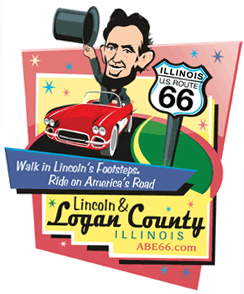|
 Mowers come in three different varieties: walk-behind, ride-along
and none-of-the-above. Mowers come in three different varieties: walk-behind, ride-along
and none-of-the-above.
We are all accustomed to walk-behind mowers but may not realize
there are three options available today:
-
Reel-type mowers are engineless and make you supply all
the power.
-
Push mowers have an engine for the cutting, but you
supply all the motion.
-
Self-propelled mowers supply the power to cut and the
power to move.
You might be asking why anyone would want a mower that doesn't
have an engine and makes you do all the work. There are two reasons
to use these. First, reel-type mowers, with a sharp blade, make the
best-looking lawn. They cut with a scissor-like action rather than a
whacking motion, and each blade of grass is green to the end instead
of shredded and brown. The second reason to use a reel-type mower is
the good exercise you get. In most cases reel-type mowers are
usually used on smaller lawns because they tend to take more time
than mowers with engines and certainly more human energy --
something some people are in short supply of.
Standard walk-behind push mowers are usually the least expensive
option for mowing, often less expensive than even engineless reel
mowers. They don't have any other benefit to offer except mowing at
a low purchase price. They usually wear out faster because their
construction matches their price -- cheap.

Self-propelled mowers offer the user some exercise without
wearing you out entirely. Newer models provide speed that matches
the user's walking speed: slow when you walk slowly, fast when you
want to go faster.
Walk-behind mowers are generally less expensive than riding
mowers and are generally used on lawns less than an acre. They allow
you to get close and personal with your lawn, and you get some
physical exercise.
Riding mowers offer the convenience of getting the grass cut with
much less physical exertion. They generally have larger decks and
wider blades and can get the job done in less time than a
walk-behind mower. The single downside to riding mowers is that they
tend to compress the soil they run over, and compressed soil hampers
deep-root development for grass.
Riders come in two varieties: traditional and zero-turn. A
traditional riding mower has a standard steering wheel and generally
allows for mowing with 90-degree turns. The result is straight lines
and square corners, with little precision for mowing around yard
objects like trees and furniture. Zero-turn riders can do 360
degrees on a dime, and although they take some getting used to, they
allow for precision turning and imaginative lines that flow with
your lawn rather than making it boxy. On a price scale, zero-turn is
usually more expensive than a traditional riding mower.
Both walk-behind and riding mowers require something you may have
too little of these days -- you and your time. The last class of
modern mowers don't require a person to operate them at all. They
are electric and computerized and cut the grass all by themselves.
They even determine when the grass needs cutting, based on some
pre-selections you made when the system was set up, or they follow a
schedule you have set. When they start cutting, they leave their
base station, cut the grass unattended, avoid obstacles and return
to their base station when they are done.
[to top of second column] |

Mowing is one of the best ways you can make your lawn seem fresh
and clean. The future of mowing allows you the choice of whether to
take the time to mow or put it in the hands of a robot.
A wide variety of riding mowers are available at several mower
dealers in Logan County, including Bee's in Lincoln, where they
feature Cub Cadet; Richardson's in Elkhart, where they feature
Simplicity; and Four Corners Lube in Lincoln, where they feature
Dixon mowers.
Larger fuel tanks, cruise control, automatic transmissions, more
comfortable seats and even quick-release blades are some of the
newer features on riding mowers which help extend the range and make
them easier to use.
Kathy Cosby of Richardson Repair offers this advice for mower
maintenance, regardless of whether a lawn mower is used or new:
-
Be sure to regularly clean the underside of the mower.
Otherwise, dirt and grass will build up.
-
A dull blade results in a poor lawn appearance. Regularly
sharpened blades will appear cleaner and be less vulnerable
to disease. Plan on sharpening after every fourth or fifth
cut.
-
Check the oil regularly. A good rule of thumb is to
change the oil every 50 mowed hours, or whatever time
increment the manual suggests.
-
Regularly check the mower and its parts for any wear and
tear. Replace worn parts in a timely manner.
[By JIM & JAN YOUNGQUIST and DEREK
HURLEY]
Visit the
2012 Spring Home & Garden Magazine for these great articles:
-
A fresh coat of paint
-
Marrying technology
and decorating
-
Lighting your
interior
-
Creating a cool
breeze
-
Weekend warrior takes
on the bath
-
Manicuring the lawn
-
Happy trees
-
New outdoor blooms
and foliage
-
Attracting
butterflies to your yard



|